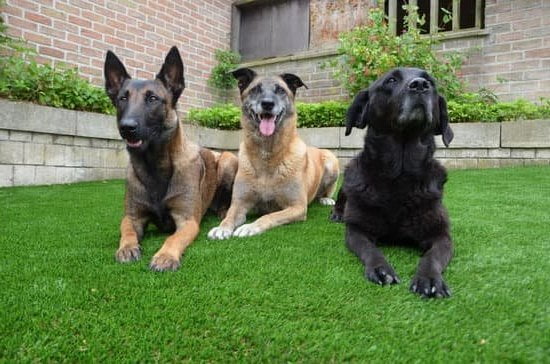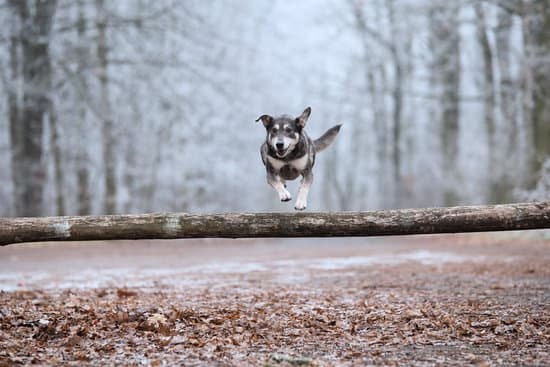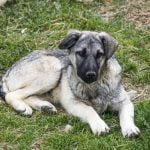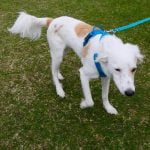Are you looking to train your bird dog to become a proficient quail hunter? If so, learning how to train a bird dog with live quail is an essential skill for any avid bird hunter. In this article, we will explore the different aspects of bird dog training with live quail, from understanding the natural instincts of a bird dog to creating a safe training environment and using positive reinforcement techniques.
Understanding the natural instincts of a bird dog is crucial in successfully training them to locate and point quail. We will discuss how selecting the right live quail for training is important, as well as creating a safe and controlled training environment to ensure the success of your training sessions.
As we delve deeper into the topic, we will also address the challenges and problem behaviors that may arise during training, as well as provide tips for successful bird dog training with live quail. By the end of this article, you will have a comprehensive understanding of how to effectively train your bird dog with live quail and be well on your way to developing a skilled hunting companion.
Understanding the Instincts of a Bird Dog
Bird dogs are unique in their instinctive ability to locate and point at live quail. It is important for bird dog trainers to understand these instincts in order to effectively train their canine companions. Here are some key points to consider when training a bird dog with live quail:
1. Natural Instincts: Bird dogs have natural hunting instincts that drive them to locate, flush, and retrieve game birds such as quail. Understanding these instincts is crucial in shaping the training process.
2. Scenting Ability: Bird dogs have an exceptional sense of smell, allowing them to pick up on the scent of quail over long distances. This ability should be cultivated and honed during training to enhance the bird dog’s hunting skills.
3. Pointing Behavior: One of the most distinctive instincts of a bird dog is its ability to “point” at game birds like quail, indicating the location of the prey without flushing it out. Training this behavior is essential for successful bird dog hunting.
When training a bird dog with live quail, it is important to keep these natural instincts in mind and use them as a foundation for developing effective hunting skills in your canine companion.
Selecting the Right Live Quail for Training
When it comes to training a bird dog with live quail, selecting the right quail for training is crucial for the success of the training process. Here are some key considerations to keep in mind when choosing live quail for bird dog training:
- Health and Condition: It is important to select live quail that are healthy and in good condition for training. Sick or weak quails may not provide the best training experience for your bird dog.
- Size and Age: The size and age of the live quail also matter when it comes to training. Younger quails may be more agile and faster, providing a greater challenge for your bird dog during training. It’s important to choose quails that are appropriate for your bird dog’s current skill level.
- Behavior: Selecting live quail with strong natural instincts can greatly enhance the effectiveness of the training process. Look for quails that exhibit natural evasive behavior, as this will help simulate real hunting scenarios during training.
Additionally, if you are new to bird dog training with live quail, it may be beneficial to seek advice from experienced trainers or hunters who have expertise in selecting the right live quail for training purposes.
Ultimately, choosing the right live quail for bird dog training is essential in creating a realistic and effective training environment that will help develop your bird dog’s hunting skills.
In summary, understanding how to train a bird dog with live quail starts with careful consideration of the selection of live birds used in their introduction should be done thoughtfully. When handled correctly these birds introduce sight scent pointing honor backing retrieving water finding field coverage upland,blood trailing colitis on command and strong prey driver (GAP)through hunting downed game by flushing prey out.
Creating a Safe and Controlled Training Environment
First and foremost, it is essential to select a suitable location for training. Look for an area with sufficient space for the bird dog to move around freely, but also one that can be easily controlled to prevent the live quail from escaping. A fenced-in area or an enclosed field can provide the necessary containment while allowing the bird dog to practice its hunting skills.
Additionally, it is important to minimize distractions in the training environment. Choose a quiet location away from heavy foot traffic or other animals that could disrupt the training session. This will help the bird dog stay focused on the task at hand and prevent any unnecessary stress on both the dog and the live quail.
Finally, consider using equipment such as a remote launcher or release cage to control the movement of the live quail during training. These tools can help simulate realistic hunting scenarios while ensuring that the quail remain safe and secure during the training process.
By creating a safe and controlled training environment, you can set your bird dog up for success in learning how to locate and point live quail effectively. Taking these precautions will not only promote effective learning but also contribute positively to your bird dog’s overall welfare during training sessions.
Teaching the Bird Dog to Locate and Point Quail
As you start training your bird dog with live quail, it’s important to focus on teaching them to locate and point the birds. This is a crucial step in their development as a successful hunting companion. Here are some tips on how to effectively train your bird dog to locate and point quail.
Understanding the Natural Instincts
Before you begin training, it’s essential to understand the natural instincts of your bird dog. Their instinct to hunt and point is innate, but it can be honed and refined through proper training. By understanding these instincts, you can tailor your training methods to align with your bird dog’s natural behaviors.
Implementing Training Techniques
One effective technique for teaching your bird dog to locate and point quail is using a “check cord.” This involves attaching a long line to your dog’s collar and allowing them to explore while you gently guide them in the desired direction. When they locate the live quail and go into a point, use positive reinforcement such as treats or praise to reinforce this behavior.
Another technique involves gradually introducing the live quail in controlled environments, such as a fenced area or controlled field. As the bird dog becomes accustomed to finding and pointing the quail in these settings, gradually increase the complexity of the training scenarios.
Utilizing Live Quail in Training
When introducing live quail during training sessions, ensure that they are healthy and vibrant. Selecting the right live quail for training is important in ensuring that your bird dog has a positive experience during their training sessions. Gradually exposing your bird dog to various scents associated with live quail will help them become familiar with locating and pointing these birds in real hunting scenarios.
By understanding their natural instincts, implementing effective training techniques, and utilizing live quail in controlled environments, you can successfully teach your bird dog to locate and point quail. Consistent training and positive reinforcement will help develop this valuable skill in your hunting companion.
Using Positive Reinforcement Techniques During Training
Positive reinforcement techniques are essential when training a bird dog with live quail. This method of training focuses on rewarding the desired behavior in order to encourage the bird dog to repeat it. Whether it’s pointing, tracking, or retrieving quail, positive reinforcement can be used to effectively communicate with your bird dog and create a strong bond between the two of you.
The key to using positive reinforcement is timing and consistency. When your bird dog exhibits the desired behavior, such as pointing at a live quail, it’s important to immediately reward them with a treat, praise, or some form of affection. This helps them understand that their action led to a positive outcome and increases the likelihood of them repeating the behavior in the future.
In addition to using treats and praise as rewards, you can also incorporate playtime and attention from you as part of the positive reinforcement process. By making the training sessions enjoyable and rewarding for your bird dog, they will be more motivated to perform well and continue learning how to locate and point quail effectively. Positive reinforcement not only enhances your bird dog’s performance but also strengthens your relationship with them.
Overall, positive reinforcement techniques create a cooperative and trusting relationship between you and your bird dog while making learning enjoyable for them. With patience, consistency, and the use of rewards, you can effectively train your bird dog on how to locate and point quail in real hunting scenarios. This approach not only ensures successful training sessions but also fosters a strong bond between you and your loyal hunting companion.
Addressing Challenges and Problem Behaviors in Training
Training a bird dog with live quail can present a variety of challenges and potential problem behaviors. One common issue is the dog’s overexcitement or lack of focus, which can lead to disobedience and an inability to follow commands.
Another challenge is the dog’s reluctance or refusal to release the quail after pointing it, which can negatively impact the hunting experience. Additionally, some bird dogs may exhibit fear or aggression towards live quail, requiring specialized and careful training techniques.
To address these challenges and problem behaviors, it is crucial for trainers to have a deep understanding of their bird dog’s instincts and behavior patterns. By recognizing and acknowledging these challenges, trainers can develop effective strategies to overcome them and ensure successful training with live quail. Understanding the root causes of problem behaviors will also allow trainers to tailor their approach accordingly, thus fostering a more positive training experience for both the bird dog and handler.
When addressing challenges in bird dog training with live quail, patience, consistency, and positive reinforcement are key. Trainers should be patient with their dogs while reinforcing consistent rules and boundaries during training sessions.
Positive reinforcement techniques such as praise, treats, or play can be used to encourage desired behaviors and discourage problem behaviors. By implementing these strategies in a safe and controlled training environment, trainers can effectively address challenges and problem behaviors while building a trusting and cooperative relationship with their bird dog.
| Challenges | Strategies |
|---|---|
| Overexcitement or lack of focus | Consistency, patience, positive reinforcement |
| Reluctance to release quail after pointing | Positive reinforcement techniques to encourage obedience |
| Fear or aggression towards live quail | Gradual desensitization techniques in a controlled environment |
Gradual Integration of Live Quail in Real Hunting Scenarios
Understanding the Importance of Integration
Once your bird dog has mastered locating and pointing live quail in a controlled training environment, it’s time to gradually integrate live quail into real hunting scenarios. This step is crucial in transitioning your bird dog from training to actual hunting situations. By exposing your bird dog to live quail in realistic hunting settings, you are helping them apply their learned skills in a practical and authentic manner.
Simulating Real Hunting Scenarios
To effectively integrate live quail in real hunting scenarios, start by taking your bird dog to areas where quail are known to inhabit. Allow your bird dog to utilize their instincts and training as they search for and point live quail in these natural settings. It’s important to provide opportunities for your bird dog to practice their skills while navigating through different terrains and environmental conditions.
Reinforcing Training Techniques
During this phase of integration, continue using positive reinforcement techniques as rewards for your bird dog’s successful hunts. This will further strengthen their ability to locate and point live quail while out in the field. Be patient and consistent with your training approach, offering praise and treats when your bird dog successfully demonstrates their training in real hunting scenarios. With dedication and practice, your bird dog will become proficient at finding and pointing live quail during actual hunting expeditions.
By gradually integrating live quail into real hunting scenarios while reinforcing their training techniques, you can effectively prepare your bird dog for successful hunts in the field.
Tips for Successful Bird Dog Training With Live Quail
Bird dog training with live quail can be a rewarding and effective way to prepare your canine companion for hunting. However, it requires careful planning and execution to ensure that the training is successful. Here are some tips to help you train your bird dog with live quail:
First, it’s important to start the training process early in your bird dog’s life. Puppies as young as 8 weeks old can begin basic training exercises, such as introducing them to the sight and smell of live quail. Early exposure will help them develop a strong foundation for their hunting instincts.
When selecting live quail for training, it’s crucial to choose healthy birds from a reputable source. Avoid using sick or injured quail, as this can negatively impact your bird dog’s training experience. Additionally, consider using different types of live quail during training to expose your bird dog to various scents and behaviors.
During the training process, create a safe and controlled environment where your bird dog can focus on learning how to locate and point quail without distractions. Use positive reinforcement techniques such as treats and praise to encourage desirable behaviors. Consistency is key in reinforcing these behaviors throughout the training process.
By following these tips and being patient with your bird dog during the training process, you can increase the likelihood of success in preparing them for real hunting scenarios.
| Tips for Successful Bird Dog Training | Key Practices |
|---|---|
| Start Early | Begin training at a young age for a strong foundation. |
| Select Healthy Quail | Choose live quail from reputable sources and avoid using sick or injured birds. |
| Create Controlled Environment | Establish a safe space for training without distractions. |
| Use Positive Reinforcement | Encourage desirable behaviors with treats and praise. |
Conclusion and Recap of Key Training Points
In conclusion, training a bird dog with live quail requires patience, consistency, and a deep understanding of the instincts and behaviors of both the bird dog and the quail. It is crucial to create a safe and controlled environment for training, as well as using positive reinforcement techniques to encourage desired behaviors. Selecting the right live quail for training is also essential, as well as gradually integrating live quail in real hunting scenarios.
Understanding the instincts of a bird dog is crucial to successful training with live quail. By recognizing and working with these natural instincts, you can effectively teach your bird dog to locate and point quail in real hunting situations. It’s important to address any challenges or problem behaviors that may arise during training, using patience and consistent training methods to overcome obstacles.
By following the tips provided for successful bird dog training with live quail, you can build a strong foundation for effective hunting partnerships with your bird dog. Remember that each bird dog is unique, so it’s important to adapt your training methods to suit the individual needs of your canine companion.
With dedication and a clear understanding of how to train a bird dog with live quail, you can develop a skilled hunting partner that will bring you many successful hunts in the future.
Frequently Asked Questions
Are Quail Good for Dog Training?
Quail can be a great tool for dog training, especially for teaching pointing and retrieving skills to hunting dogs. The scent of quail can also help in training a dog’s tracking abilities.
How Do You Introduce a Dog to a Quail?
Introducing a dog to quail should be done gradually and with positive reinforcement. Start by allowing the dog to see and smell the quail from a safe distance, then slowly introduce closer interactions while ensuring the dog remains calm and controlled.
How Do You Train a Dog With Quail Wings?
Training a dog with quail wings involves first familiarizing the dog with the scent and sight of the wings. Then, using them as a retrieval object can help reinforce hunting instincts and retrieve commands in gun dogs or other breeds trained for hunting purposes.

Welcome to the blog! I am a professional dog trainer and have been working with dogs for many years. In this blog, I will be discussing various topics related to dog training, including tips, tricks, and advice. I hope you find this information helpful and informative. Thanks for reading!





